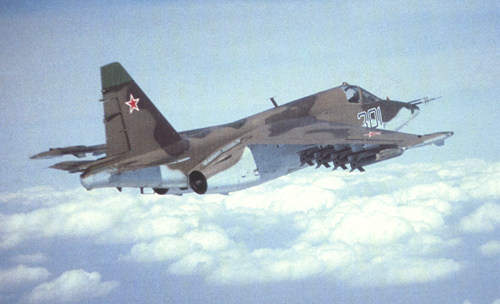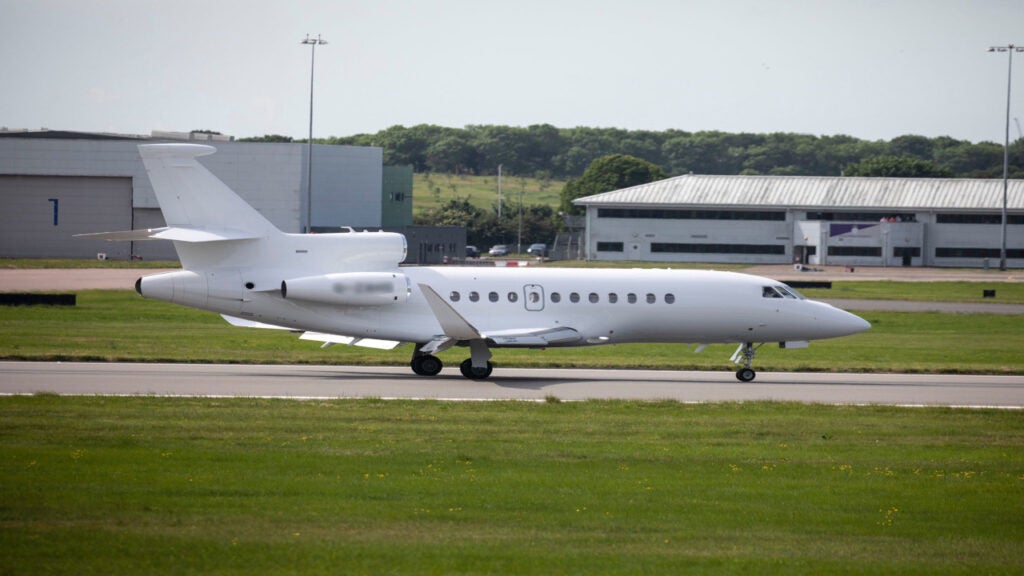
The Su-25 single-seat, close-support aircraft, known by the NATO reporting name Frogfoot, is manufactured by the Sukhoi Design Bureau Joint Stock Company, based in Moscow, and the Novosibirsk Aircraft Production Association of Novosibirsk, Russia. The Su-25 is designed to defeat small mobile and stationary ground targets and to engage low-speed air targets at the forward edge and in the nearest tactical and operational depth.
A two-seater variant, Su-35UB (Frogfoot-B), is a weapons training aircraft manufactured at Ulan-Ude. The Su-25UTG is the two-seater aircraft carrier variant fitted with an arrester hook under the tail. The Su-25UTG is deployed on the Russian Navy 50,000t aircraft carrier Admiral Kuznetsov.
The Su-28 is a trainer aircraft for the Russian Air Force, which was modified by downgrading the features of Su-25UB combat trainer. The changes included the reduction of equipment and removal of certain armaments. The aircraft was demonstrated during a test flight in June 1989.
Su-25 variants
Variants of the Su-25 are operational with the Russian Air Force, the Russian Naval Aviation forces, Afghanistan, Angola, Azerbaijan, Belarus, Bulgaria, the Czech Republic, Georgia, Iran, Iraq, Kazakhstan, Macedonia, North Korea, Peru, the Slovak Republic, Turkmenistan and the Ukraine. The export variant of the aircraft carries the designation Su-25K.
An upgraded version for the Russian Air Force, the Su-25SM entered service in January 2007. The upgrade includes new navigation computer, Pastel countermeasures suite, SUO-39 fire control system and Phazotron Kopyo-25M radar.
In August 2010, the Russian Air Force temporarily grounded its Su-25 fleet to investigate a crash that occurred on 6 August 2010. The crash occurred at 60km north-west of Step Airport in Siberia while performing training missions.
The Ulan-Ude aviation plant (UUAZ) made the decision in November 2010 to resume production of Su-25 once orders are obtained from the Russian Defence Ministry and the United Aircraft Building Corporation.
The Su-28 aircraft can be used to convert a cadet into a qualified pilot. It offers features such as high manoeuvrability and continuity in piloting technique.
The trainer aircraft provides single-engine take-off, flight and landing capability and can conduct up to 20 take-offs and landing in a single departure. It can be operated with diesel fuel and provides high reliability and low maintenance costs.
Su-25 orders and deliveries
The first delivery of the Su-25K, the export version of Su-25, was made to the Czechoslovakian Air Force in 1984.
North Korea received 14 Su-25s from the Soviet Union in 1987 and additional 26 aircraft in 1988.
The Iraqi government received the first five Su-25M aircraft from Russia in June 2014, followed by three additional Su-25Ms in 2016.
In November 2018, the Bulgarian Air Force signed a contract with Belarus’s JSC 558th Aircraft Repair Plant (558 ARZ) for the upgrade of 14 Su-25K and Su-25UBK aircraft. The contract was later revised, reducing the number of aircraft to eight. The Bulgarian Air Force received the eighth and final upgraded aircraft in February 2021.
Su-25K Scorpion
An upgraded Su-25K, the Scorpion, was developed by Tbilisi Aerospace Manufacturing (TAM) of Georgia and Elbit of Israel. Scorpion has a new advanced avionics system with a weapon delivery and navigation system for both Nato and Eastern European weapons and pods, and a new glass cockpit with two multicolour LCD displays and a head-up display (HUD).
Su-25 cockpit The aircraft has an all-welded, 24mm titanium alloy cockpit with transparent windscreen armour block to protect the pilot. It is equipped with a single K-36L Zvezda ejection seat.
Weapons
The wings have ten pylons for carrying a range of air-to-air and air-to-ground weapon systems selected for the mission. Air-to-ground missiles include Kh-23 (Nato codename AS-7 Kerry), Kh-25ML (AS-10 Karen) and Kh-29l (AS-14 Kedge). The air-to-air missiles carried on the smaller outboard pylons are the R-3S (AA-2D Atoll) and the R-60 (AA-8 Aphid).
The aircraft can be fitted with UB-32A pods for 57mm S-5 rockets, B-8M1 pods for 80mm S-8 rockets, S-24 240mm guided rockets and S-25 330mm guided rockets.
The Su-25 can be armed with 350kg-670kg laser-guided bombs, 500kg incendiary devices and cluster bombs.
The aircraft’s twin-barrel gun, the 30mm AO-17A, is installed in the underside of the fuselage on the port side. The gun is armed with 250 rounds of ammunition and is capable of firing at a burst rate of 3,000 rounds a minute. SPPU-22 gun pods can also be installed on the underwing pylons. The pods carry the GSh-23 23mm twin-barrel guns, each with 260 rounds of ammunition.
Targeting system
The aircraft is equipped with an integrated navigation and aiming system, including ASP-17 BTs-8 gun / bomb sight with an AKS-750s camera installed in the nose. The nose also houses a Klyon PS laser ranger and target designator, manufactured by the Urals Optical and Mechanical Plant (YOM3).
Countermeasures of the Sukhoi close support aircraft
The electronic warfare suite includes an SPO-15 Sirena-3 radar warning receiver and a Gardeniya radar jammer. The ASO-2V decoy dispenser can deploy chaff and flares for protection against radar and infrared guided missiles.
Navigation and communication systems of Su-25
The aircraft is equipped with an RSBN tactical air navigation system (TACAN), MRP-56P marker beacon receiving unit, RV-1S radio altimeter and various air data and acceleration indicators. The communication systems include an SRO-2 identification friend or foe (IFF) transponder and a SO-69 air traffic control transponder, together with VHF/UHF transceivers and an air-to-ground radio.
Engines
The Russian Air Force Su-25 aircraft is powered by two Soyuz / Gavrilov R-195s turbojet engines rated at 44.18kN. Cooling air is introduced at the end of the tail cone to reduce the temperature of the exhaust gases and minimise the infrared signature of the aircraft.
The aircraft is equipped with self-sealing, foam-filled fuel tanks with a total fuel capacity of 3,600l. The range of the aircraft can be extended by the provision of four PTB-1500 external fuel tanks, which are carried on the underwing pylons.
Performance of Sukhoi Su-25
The Su-25 can climb at the rate of 58m/s. The maximum speed of the aircraft is 950km/h. The combat radius and ferry range of the aircraft are 375km and 7,500km respectively. The normal range of the Su-25 is 750km, while its service ceiling is 7,000m.
The take-off and landing roll of the Su-25 are 750m and 600m respectively. The aircraft weighs around 10,740kg and its maximum take-off weight is 17,600kg.



